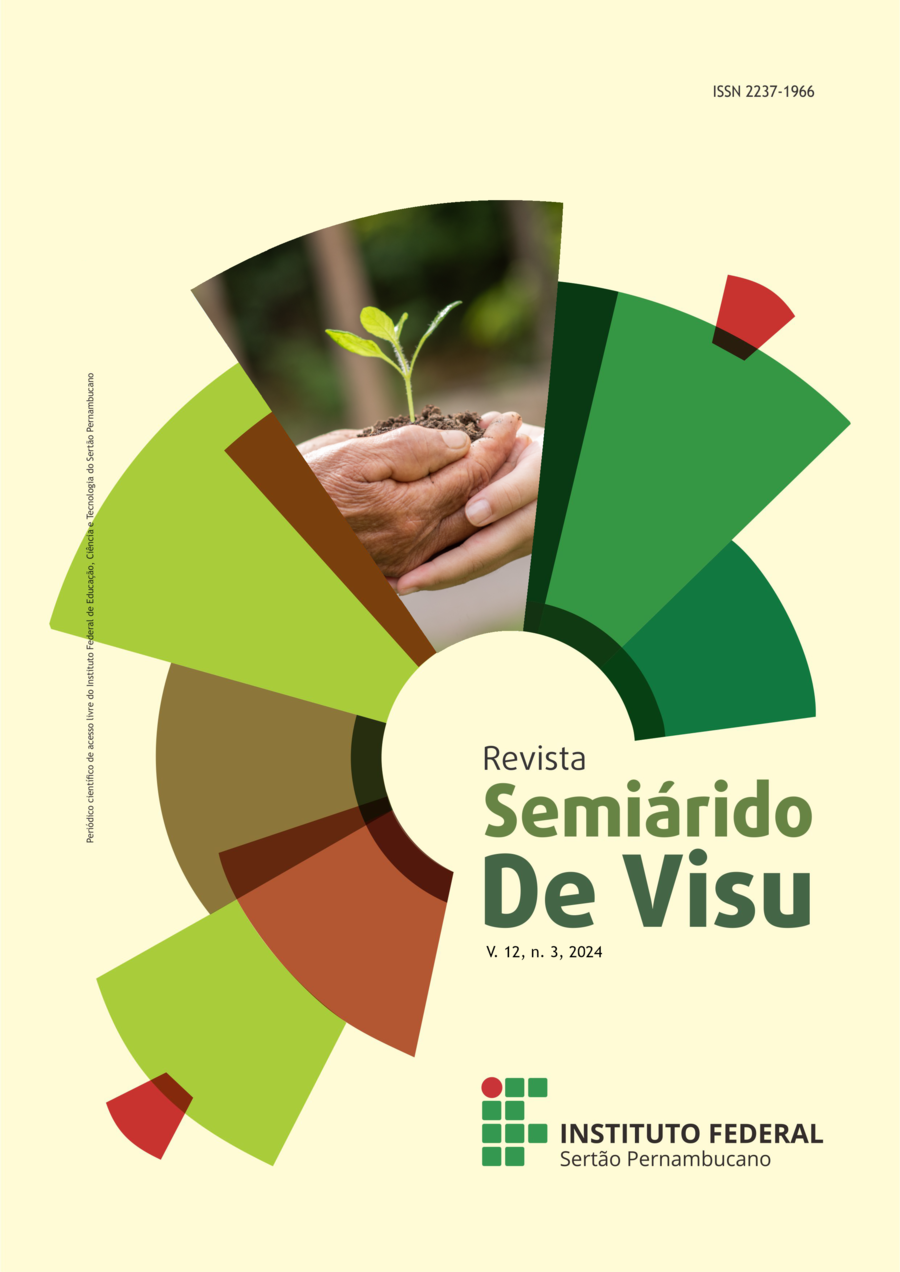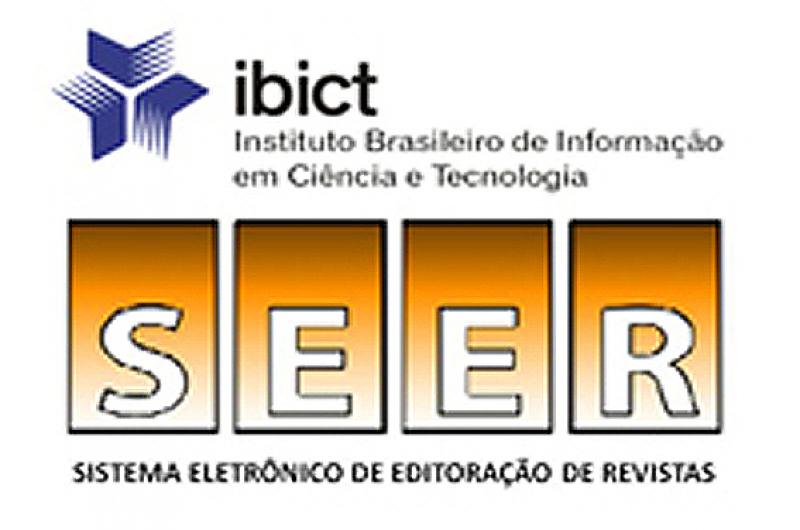Corante natural azul da flor comestível (Clitória ternatea): Extração, caracterização e avaliação da estabilidade.
DOI :
https://doi.org/10.31416/rsdv.v12i3.899Résumé
Através do crescente interesse pela obtenção e aplicação de pigmentos naturais em sistemas alimentícios, as flores comestíveis começaram a ficar em evidência e sua produção, tem sido impulsionada por atribuírem características nutracêuticas aos alimentos. A Clitoria ternatea possui vários constituintes químicos com efeitos farmacológicos, alto conteúdo de antocianinas e capacidade antioxidante. Objetivou-se a utilização da flor comestível Clitoria ternatea para a extração e avaliação da estabilidade e viabilidade tecnológica na obtenção de corantes alimentícios. O extrato obtido da flor foi concentrado até 20% do seu volume original, foi caracterizado quanto ao teor de antocianinas e capacidade antioxidante e submetido à teste de estabilidade com amostras tamponadas expostas à luz e ao escuro, em temperatura ambiente (± 25°C), por cinco semanas em diferentes pH. Em todos os estudos efetuados (teor de antocianinas, colorimétrica e cinética de degradação) os resultados apontaram que a luz tem efeito deletério sobre as antocianinas, embora não de forma tão expressiva o que indica que a estrutura química possivelmente acilada faz com que o extrato antociânico seja relativamente mais estável do que outras fontes já estudadas. Além disso vale ressaltar que embora pH mais baixos sejam favoráveis para estabilização da forma cátion flavilium, o extrato em questão apresentou valores de tempo de meia vida significativamente altos mesmo em pH em torno de 5. Este resultado é muito interessante pois nessa faixa de pH tem-se o extrato na cor azul desejada.
Références
ABDULLAH, R., LEE, P. M., & LEE, K. H. Multiple color and pH stability of floral anthocyanin extract: Clitória ternatea. International Conference on Science and Social Research, p. 254-258, 2010. DOI: 10.1109/CSSR.2010.5773778
AZIMA, A M SITI ; NORIHAM, A ; MANSHOOR, N. Synergistic effects of Garcinia mangostana and Clitoria ternatea extract mixture on antioxidant activities, colour, and anthocyanin stabilities. International food research journal, v. 29, n. 3, p.631-645, 2022. DOI: 10.47836/ifrj.29.3.15
BUENO, M. J., SAEZ-PLAZA, P., RAMOS-ESCUDERO, F., JIMENEZ, A. M, FETT, R., ASUERO, A. G. Analysis and antioxidant capacity of anthocyanin pigments. Part II: chemical structure, color, and intake of anthocyanins. Critical Reviews in Analytical Chemistry, v.42, n 2, p. 126–151, 2012. DOI: :10.1080/10408347.2011.632314
CHATHAM, L. A., HOWARD, J. E. AND JUVIK, J. A. A natural colorant system from corn: flavone-anthocyanin copigmentation for altered hues and improved shelf life. Food Chemistry, v.310, p. 125734, 2020. DOI: 10.1016/j.foodchem.2019.125734
CONSTANT, P. B. L.; BORGES, A. S.; NUNES, T. P.; SILVA, F. L. A. T.; SILVA, A. G.; LIMA, V. C. N. N.; FERREIRA, M. S. A. S.; STRINGHETA, P. C. Aplicação do corante de açaí (Euterpe oleracea M) em sistemas alimentícios. Observatorio de la Economía Latino Americana, v. 21, n. 11, p. 18571–18593, 2023. DOI:10.55905/oelv21n11-001
CUNNIGHAM, E. What nutritional contribution do edible flowers make. Journal of the Academy of Nutrition and Dietetics, v. 115, n. 5, p. 856, 2015. DOI: 10.1016/j.jand.2015.03.002
DEL RÉ, P.V.; JORGE, N. Especiarias como antioxidantes naturais: aplicações em alimentos e implicação na saúde. Revista brasileira de plantas medicinais, v. 14, n. 2, p. 389-399, 2012. DOI:10.1590/S1516-05722012000200021
GOH, S. E.; KWONG, P J.; NG, C. L.; NG, W. J.; EE, K. Y. Antioxidant-rich Clitoria ternatea L. flower and its benefits in improving murine reproductive performance. Food Science and Technology, v. 42, p. e25921, 2022. DOI:10.1590/fst.25921
FULEKI, T.; FRANCIS, F. J. Quantitative methods for anthocyanins. 1 Extraction and determination of total anthocyanin in cranberries. Journal of Food Science, v.33, p.72-77, 1968. DOI: 10.1111/j.1365-2621.1968.tb00887.x
HUNTERLAB. Applications note: CIE L* a* b* color scale. 1996. Disponível em https://support.hunterlab.com/hc/en-us/article_attachments/201439655
KUNGSUWAN, K., SINGH, K., PHETKAO, S., Y UTAMA-ANG, N. Effects of pH and anthocyanin concentration on color and antioxidant activity of Clitória ternatea extract. Food and Applied Bioscience Journal, v. 2, n.1, p. 31-46, 2014. DOI: /10.14456/fabj.2014.3.
LARRAURI, J. A.; RUPÉREZ, P.; SAURA-CALIXTO, F. Effect of drying temperature on the stabilitity of polyphenols and antioxidant activity of red grape pomace peels. Journal Agriculture Food Chemistry, v.45, p.1390-1393, 1997. DOI: /10.1021/jf960282f
Lee Y. K., Yu B., Lim H. N., Lim J. I. Difference in the color stability of direct and indirect resin composites. J. Appl Oral Sci., v. 19, n. 2, p. 154-160, 2011. DOI:10.1590/S1678-77572011000200012
LI, A., LI, S., LI, H., XU, D., XU, X., & Chen, F. Total phenolic contents and antioxidant capacities of 51 edible and wild flowers. Journal of Functional Foods, v. 6, n. 1, p. 319–330, 2014. DOI: 10.1016/j.jff.2013.10.022
MARPAUNG, A. M., ANDARWULAN, N., PRANGDIMURTI, E. The optimization of anthocyanin pigment extraction from butterfly pea (Clitória ternatea L.) petal using response surface methodology. Acta Horticulturae, v. 1011, p. 205–211, 2013. DOI:10.17660/ActaHortic.2013.1011.24
MAZZA, G. and MINIATI, E. Anthocyanins in fruits, vegetables, and grains. 1d, Boca Raton: CRC Press, 1993.
MOTA, F. G.; NUNES, T. P.; BORGES, A. S.; SILVA, A. G.; CONSTANT, P. B. L. . Extraction and quantification of anthocyanins from dehydrated Clitorea Ternatea flowers. Research, Society and Development, v. 11, n. 9, p. e55111932293, 2022. DOI: 10.33448/rsd-v11i9.32293.
MOTA, F G.; BORGES, A. S; NUNES, T. P.; GAGLIARDI, P. R.; SILVA, R. R.; SILVA, A. G.; DURIGON, A.; CONSTANT, P. B. L. Flor de Clitoria ternatea: desidratação e caracterização. Observatório de la Economía Latino Americana, v. 21, p. 9740-9757, 2023. DOI:10.55905/oelv21n8-102
OTT, D. B. Manual de Laboratorio de Ciencia de los Alimentos. 1d, Zaragoza: Editorial Acribia, 1992.
ORR, D. Cultivo e comercialização de flores comestíveis. Revista da Associação Brasileira de Horticultura, Brasília, v 26, n 3. p 1, 2011.
PEDRO, A. C., GRANATO, D., ROSSO, N. D. Extraction of anthocyanins and polyphenols from black rice (Oryza sativa L.) by modeling and assessing their reversibility and stability. Food Chemistry, v. 191, p. 12–20, 2016. DOI: 10.1016/j.foodchem.2015.02.045
PULIDO, R.; BRAVO, L.; SAURA-CALIXTO, F. Antioxidant activity of dietary as determined by a modified ferric reducing/antioxidant power assay. Journal Agriculture and Food Chemistry, v. 48, p. 3396-3402, 2000. DOI: 10.1021/jf9913458
RE, R., PELLEGRINI, N.; PROTEGGENTE, A.; PANNALA, A.; YANG, M.; RICE-EVANS, C. Antioxidant activity applying an improved ABTS radical cation decolorization assay. Free Rad. Biol. Medic., v. 26, n. 9-10, p. 1231–1237, 1999. DOI: 10.1016/s0891-5849(98)00315-3
RESENDE, L. G. M.; SANTOS, J.; SANTOS, B. S.; TELES, A. R. S.; CONSTANT, P. B. L. Corante antociânico extraído do fruto jambolão: formulação e avaliação da estabilidade dos compostos bioativos. Interação, v. 21, p. 645-658, 2021. Recuperado de https://interacao.org/index.php/edicoes/article/view/72
SILVA, G.J.F.; CONSTANT, P.B.L.; SILVA, A.G.; NARAIN, N.; MOURA, S.M. Potential of jabuticaba ( spp.) fruit in obtaining the natural functional colors for foods. Acta Horticulturae, v. 1, p. 97-100, 2018. DOI: 10.17660/ActaHortic.2018.1198.18
SIPAHLI S., MOHANLALL V., MELLEM J. Stability and degradation kinetics of crude anthocyanin extracts from H. Sabdariffa. Food Sci. Technol., v. 37, n. 2, p. 209-215, 2017. DOI:10.1590/1678-457X.14216
TEIXEIRA, L. N.; STRINGHETA, P. C.; OLIVEIRA, F. A. Comparação de Métodos para Quantificação de Antocianinas. Revista Ceres, v. 55, n.4, 2008 p. 297-304, 2008. Recuperado de: https://www.redalyc.org/a
Téléchargements
Publiée
Comment citer
Numéro
Rubrique
Licence
© Revista Semiárido De Visu 2024

Ce travail est disponible sous la licence Creative Commons Attribution 4.0 International .















